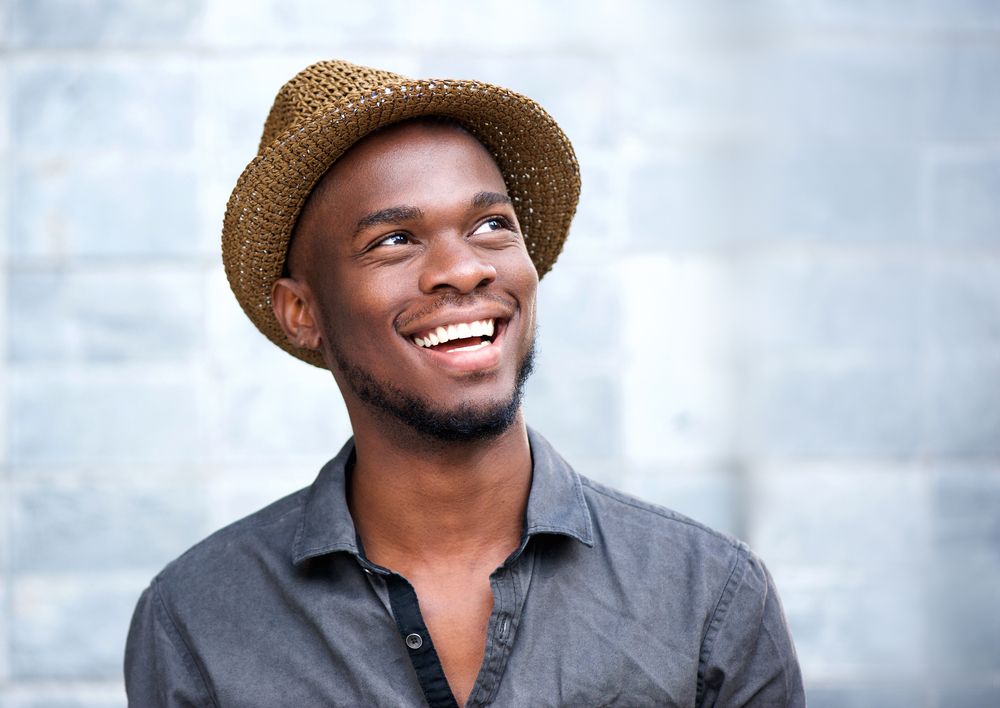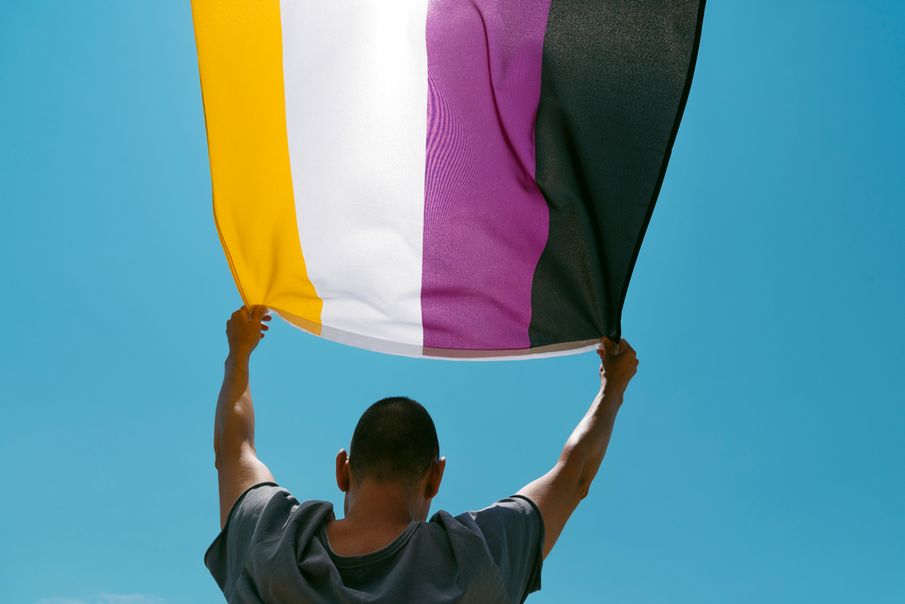Exploring the term ‘non-binary’, and how to be a better ally
A lot of people have been brought up in a society with limited definitions of gender, primarily only male and female. But for those for whom these gender stereotypes don’t feel like the right fit, it can be an isolating and uncomfortable experience trying to understand your own identity.
‘Non-binary’ is an umbrella term that is often used to describe those who feel their gender identity can’t be defined within the margins of gender binary – solely as a man or a woman. Instead, they understand their gender in a way that goes beyond identifying as either male or female. It’s not about feeling more connected to the opposite gender you were assigned at birth (as is true of transgender people), but feeling somewhere in between, or even completely outside the gender spectrum. A way of looking at it is this: I don’t want to be a woman, but I don’t want to be a man either. I just want to be ‘me’. Often people will identify as non-binary when they feel constricted by what they experience to be rigid gender norms.
Why do people identify with being non-binary?
The term non-binary has such a broad definition, because it means different things to different people. There is no one specific way to act or look non-binary. Often people conjure up the idea of the androgynous appearance, but aesthetics aren’t important here – you can have long or short hair, wear a dress or wear dungarees, and still identify as non-binary. Just as men and women express themselves with their style and how they present themselves, so do non-binary people.

From my own experience, I’ve never been comfortable as female, and don’t see myself as male – so I guess I’m somewhere in between. I’m still figuring some of it out. Growing up, I refused to be what people called ‘girly’ and I was labelled a ‘tomboy’. As I reached puberty, I had this deep dread of having breasts and becoming curvy, but I didn’t want to be male. I didn’t want to be either, I just wanted to be Katie. I’d often cry about it.
As a teenager in the late 90s and early millennium, there was no visible word in my world for how I felt. All I knew was that I felt uncomfortable and uneasy about the label I’d been given, and about the pressure to conform to ideals around femininity. I felt insecure in my body, and my self-esteem was at rock bottom for most of my 20s. I didn’t understand why I felt the way I did, and thought maybe it was just due to my weight fluctuating. But it went deeper than that. It was about identity.
I’ve realised in the past few years that most of my issues around self-esteem have been because I’ve never really understood myself, or how to identify. The realisation that I’m non-binary, and explaining it to my partner, has lifted many of my insecurities. I’m more confident now than I’ve ever been. Knowing other people identify in a similar way is huge for me, and means I don’t feel alone in this anymore.
Clarifying misconceptions around being non-binary
-
It’s important to understand the distinction between being non-binary and transgender – they are not the same thing. Someone who is transgender identifies with a gender other than the one they were assigned at birth. Some non-binary people do feel this definition applies to them, but others don’t. As being non-binary is such a different experience for everyone, some people feel completely comfortable in their bodies, whereas others will struggle.
-
The idea of being non-binary is not a new invention. It’s often misunderstood as a new ‘trend’, or even just a ‘phase’ or ‘personality trait’, when it is in fact an identity that has existed for thousands of years in various cultures around the world.

-
Being non-binary does not mean a person has to be 50% feminine, 50% masculine. Non-binary people all have their own percentages they relate to masculine and feminine traits. As with men and women, those degrees may even change throughout their lives, while others don’t identify with masculinity or femininity at all. These traits in themselves can mean completely different things in different cultures, or even vary from person to person, and so the key thing to appreciate is that there is no right or wrong way to be ‘masculine’ or ‘feminine’.
-
Being non-binary is about celebrating what makes you unique, away from the social constructs that you grew up with. It’s an inclusive term that welcomes exploration of what that really means to you. It’s your own identity that you can carve out for yourself.
Respecting pronouns
Non-binary people can have a variety of pronouns. Some go by they/them, others go by she/her, he/him, or by a combination. The only way you can know is to ask. Some non-binary people will go by any pronoun, while others have a strong preference and may feel hurt or unacknowledged when this is used incorrectly. If you’re unsure which pronoun a person uses, listen first to the pronoun other people use when referring to them. If you’re still unsure and need to ask directly, you could approach the question up front by giving your own pronouns: “Hi, I’m Katie and I use the pronouns she and they. What about you?”
If you accidentally use the wrong pronoun for a person, the best thing to do is to apologise quickly and sincerely, and then move on. If you make it into a big deal, the more uncomfortable it will be for everyone involved.
Another point to consider is that if you’re in a group setting, chairing a meeting, workshop or class, it can be helpful to include pronouns at the beginning with your usual introductions, to ensure people feel included and comfortable: “Before we begin, we’d like to go around and share our names and personal pronouns. For those who haven’t done this before, this is a way that we can avoid assumptions, particularly about gender.”
One thing to note is that you should never force someone into sharing their pronouns. You don’t know their personal history, and they may be struggling with how they feel about gender. So keep the conversation open and welcoming, but ensure you respect and observe others’ boundaries.
"As a teenager, there was no visible word for how I felt. All I knew was that I felt uneasy about the label I’d been given, and about the pressure to conform to ideals around femininity"
How to be an ally to non-binary people
• Put your pronouns in your email signature and social media profile. This helps to normalise the concept of sharing personal pronouns.
• Ensure you use inclusive language in group settings. Often in groups, we tend to use binary language such as, ‘ladies and gentleman’. Non-binary options are: “Hi everyone,” “Hi folks,” “Hey pals.”
• Get into the habit of introducing yourself with your name and pronoun. Reduce stigma by normalising this conversation.
• Instead of referring to someone as a ‘husband’ ‘wife’ ‘sister’, ‘brother’, try using words that focus just on the relationship, such as, ‘partner’, ‘parent’, or ‘sibling’.
• Use people’s correct pronouns. One you may see often is they/them/theirs.
• Is your workplace, school or university using inclusive language? This would include using ‘they’ instead of ‘he/she’ and making sure to not imply there are only two genders. If you feel this could be improved, it’s something you could suggest to your HR department to revisit.
• When highlighting LGBTQ+ people in events, make sure to include non-binary people.
To connect with a counsellor to discuss your own identity, or how to support your loved ones, visit counselling-directory.org.uk


Comments